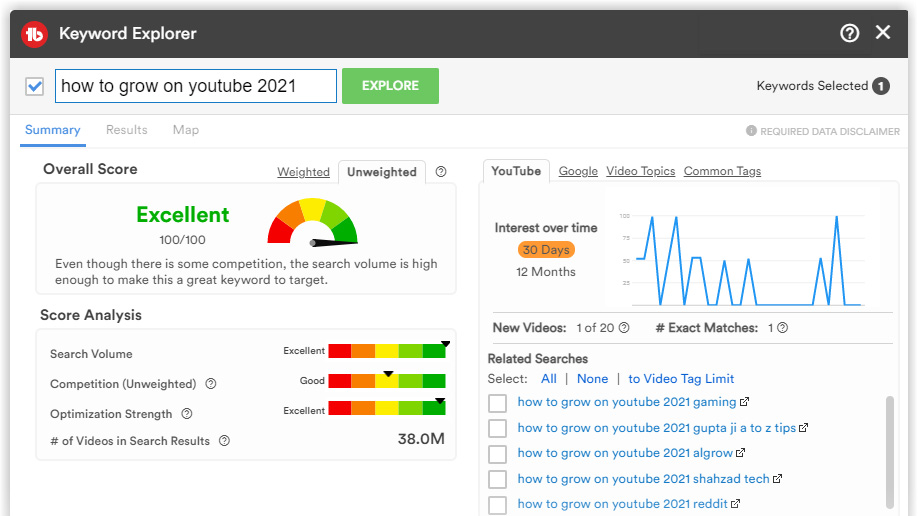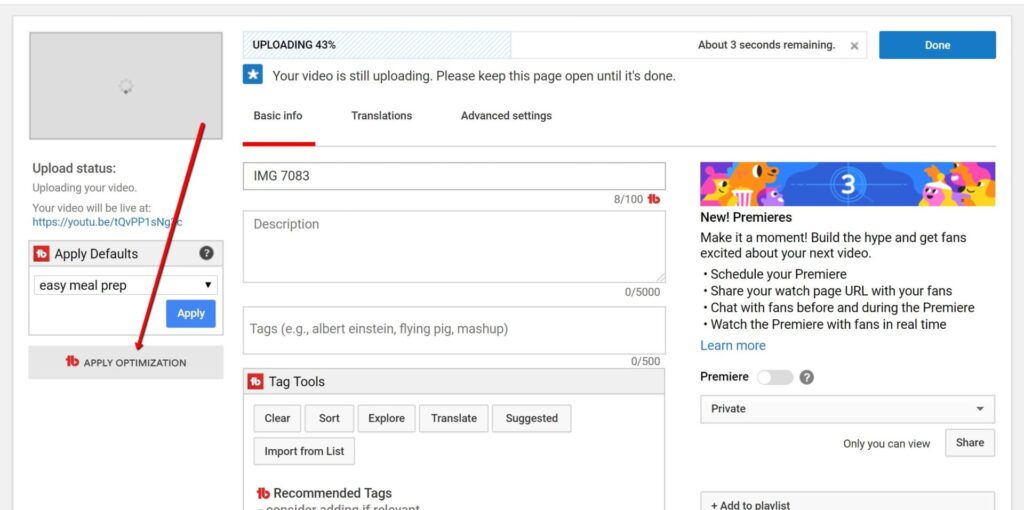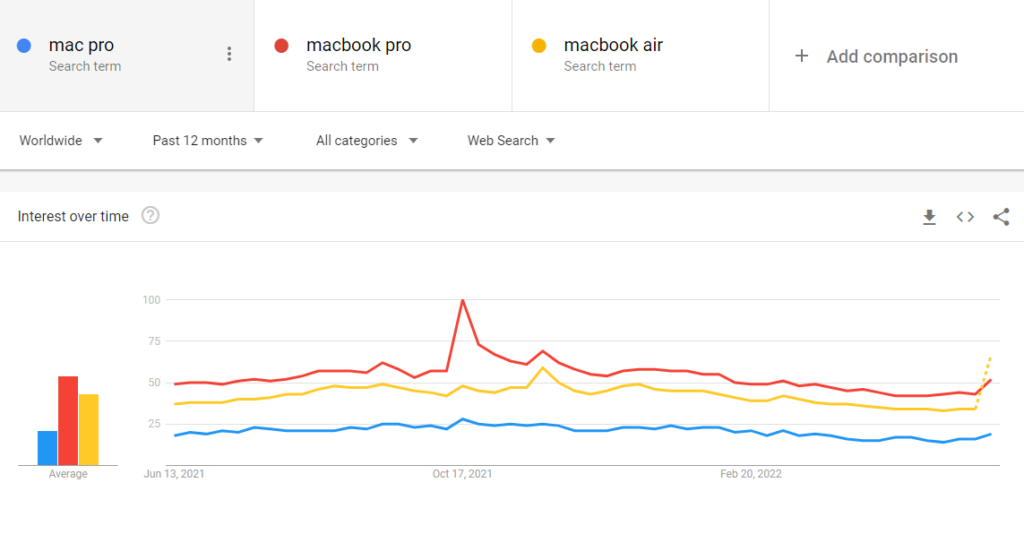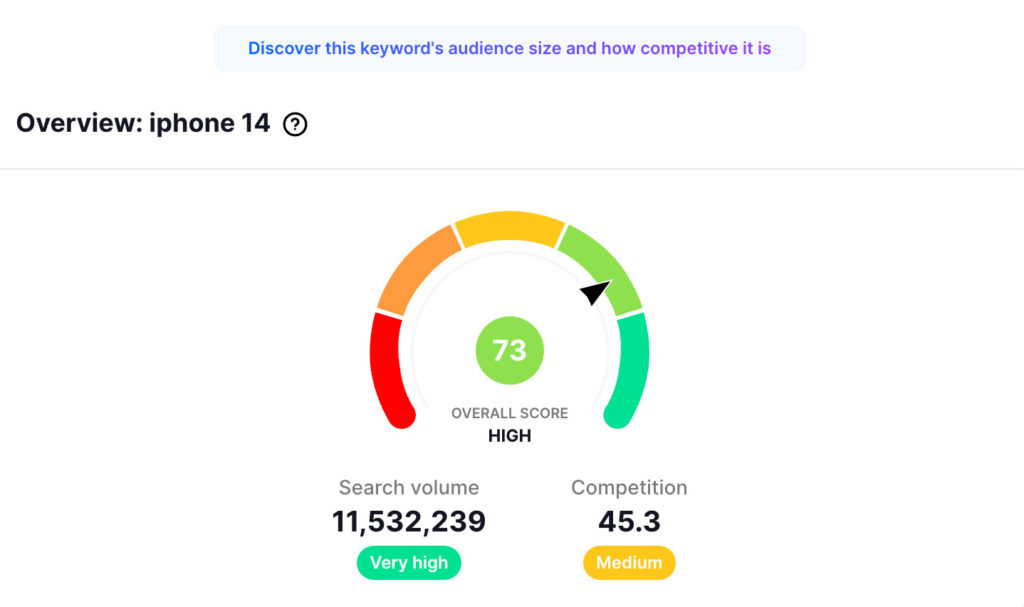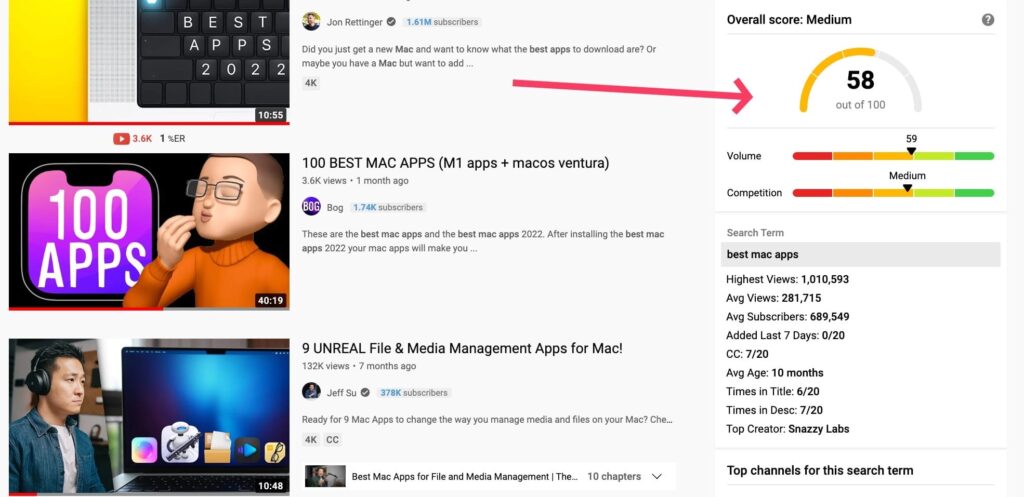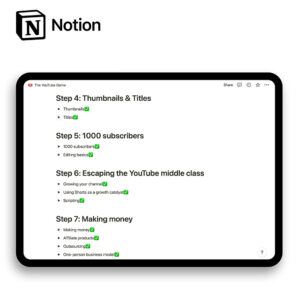Apart from a good script and thumbnail, keyword research also plays a big role in your video’s success.
There are many YouTube SEO tools out there but how do you actually use them to rank your channel for popular search terms?
By understanding what terms and phrases your target audience is searching for, you can create videos that are more likely to be discovered and watched by the right people.
So in this guide, I’ll cover the basics of keyword research for YouTube and provide some tips and tools to help you maximize your videos’ reach.
Whether you’re just starting out on YouTube or looking to take your channel to the next level, understanding how to do keyword research can help you create more targeted, relevant, and successful content.
Let’s dive in.
Research Keywords on YouTube

You can research keywords on YouTube without any third-party SEO tools.
YouTube’s search bar is a great place to find video ideas and keywords that viewers are looking for.
1. Type your video topic into YouTube search
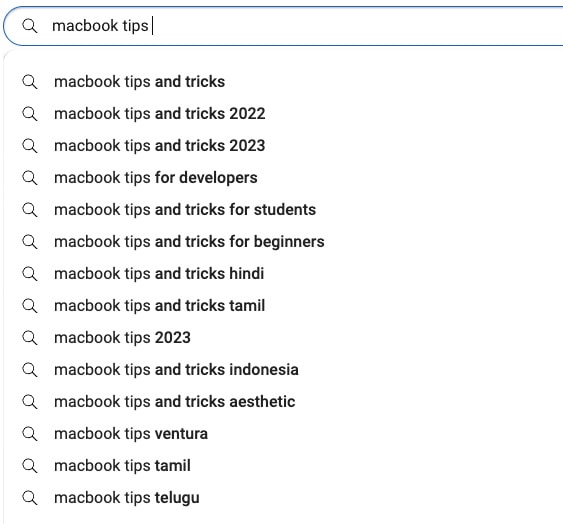
If you type the start of your search query into YouTube search you’ll see that it tries to auto-complete the search with the most popular things people search for.
You can use the search-suggested keywords as a guide for YouTube SEO.
If the keyword is at the top, chances are many people are searching for that keyword and that’s why YouTube is suggesting it.
2. Go through each letter to see the top suggested keywords

You can take YouTube search even further by giving it the first letter of the next word in your search keyword.
Enter a broad search term and then try all the letters on your keyboard to see what YouTube suggests.
When you find relevant keywords for your video, you can add them to your video’s description and title.
Research Keywords with TubeBuddy
Doing YouTube keyword research by typing search terms into YouTube search could get tiring.
That’s why there are tools like TubeBuddy that can help do it faster.
TubeBuddy is a chrome extension that adds many useful analytics to YouTube and lets you do keyword research faster.
1. Use the keyword explorer
TubeBuddy offers a free tool called keyword explorer.
You can input any phrase into the search bar and it’ll show you how much competition there is for that phrase and how many people search for it per month.
The best part is that TubeBuddy shows a weighted keyword score for every phrase that you enter.
It makes it easy to compare two search phrases with one another.
Read my full TubeBuddy review to find out about more features.
2. Use the SEO studio
TubeBuddy also has an SEO studio tool available for the Pro plan.
SEO Studio helps you optimize your video’s SEO for a specific keyword.
It shows you recommendations for your title, description, and video tags and then sums it up with an optimization score to let you know if you did a good job optimizing the video for SEO.
Try TubeBuddy for free.
Research Keywords with Google Trends
Google Trends is a free tool provided by Google that allows users to see how often specific keywords or phrases have been searched for on Google or YouTube over time.
1. Look up keyword popularity
Go to Google Trends and enter the keyword or phrase that you want to research in the “Explore topics” field.
You can also enter multiple keywords or phrases by separating them with a comma.
Once you have entered your keywords or phrases, click the “Explore” button to see the trend data.
You will see a graph showing the popularity of your keywords or phrases over time, as well as related topics and queries.
You can use the options on the left side of the page to narrow down your search results.
For example, you can choose a specific region or time period to see how the popularity of your keywords or phrases has changed in that specific area or time frame.
2. Compare two or more keywords
To see how your keywords or phrases compare to each other, click the “Compare” tab at the top of the page and enter additional keywords or phrases to compare.
Use the data from Google Trends to inform your keyword strategy on YouTube.
Look for keywords or phrases that are consistently popular over time and consider including them in your video titles, tags, and descriptions to increase the visibility of your videos on YouTube.
Research Keywords with VidIQ
One more tool that can help with keyword research is VidIQ.
This browser extension provides insights and analytics for YouTube creators.
Here’s how to use VidIQ to do keyword research for your YouTube videos:
1. Use the VidIQ keywords tool
- Start by signing up for a VidIQ account. You can do this for free by linking your YouTube channel to the platform.
- Once you’re logged in, navigate to the “Keywords” tab in the top menu.
- Use the search bar at the top of the page to enter specific keywords or phrases that you’re interested in targeting. This will bring up a list of related keywords, along with metrics such as search volume, competition level, and potential views.
- Take some time to explore the different keywords and see which ones might be a good fit for your content.
- Pay attention to the search volume and competition level to get a sense of how difficult it might be to rank for a particular keyword.
Read the full VidIQ review to find out more features.
2. Type search phrases into YouTube search
When you type a search phrase into YouTube search and hit enter, VidIQ’s search panel will appear on the right side of the screen.
This panel will show you information about that keyword – its competition, search volume, and overall score.
This is a great way to do keyword research for free without having to pay for VidIQ’s plan.
Although it’s less convenient than seeing related keywords on VidIQ’s website, it’s still a good way to figure out the search volume and keyword competition for free.
Visit VidIQ.
How to Optimise YouTube Video for SEO
SEO is all about making it easier for search engines to understand and index your content, and it’s a crucial part of any online marketing strategy.
Here are a few tips to optimize your videos better:
1. Identify your target audience
Who are you trying to reach with your YouTube videos?
Think about who is the person that would subscribe to your channel and be interested in watching your content for hours without getting bored.
Consider demographics, interests, and pain points.
Why do they want to watch your video?
How do they want to feel after they watch it?
It’s a good idea to imagine that you’re making videos for just one person.
Niche down so much that it becomes universal.
2. Determine your video topic and main keywords
What is the main theme or subject of your video?
What’s the main, parent keyword that you’re video is about?
Figure out the one single phrase that you want your video to rank for.
Use Google Trends and TubeBuddy to find relevant keywords with high search volume.
3. Use long-tail keywords
In addition to main keywords, consider using longer, more specific phrases (long-tail keywords).
These can be more targeted and less competitive than short, broad keywords.
Examples of broad keywords: dogs, cats, funny animals, funny videos, news, summer, winter, etc.
Examples of long-tail keywords: golden retriever training tricks for beginners, cat breeds that don’t shed a lot of fur, and zoo animals that are endangered, Mac tips and tricks for beginners switching from Windows, etc.
4. Optimize your video title and description
Use your main and long-tail keywords in your video title and description to increase your chances of appearing in search results
Make sure your title and description accurately and concisely describe the content of your video
Use tags to help YouTube understand the topic of your video.
If you install TubeBuddy you will also be able to see which tags your video is ranking for and what’s the ranking position for that specific tag.
5. Monitor and analyze your keyword performance
Monitor your video’s performance using YouTube Analytics.
Usually, a YouTube video ranks for search after some time passes. YouTube tests out the video with various audiences and then decides whether to rank the video or not.
I’ve had videos rank for top search results as long as 6 months after they’ve been published.
Use the analytics tools that YouTube provides in YouTube Studio to track the performance of your keywords and see which ones are driving the most traffic to your videos.
Use this data to adjust your keyword strategy and optimize your videos for better results.
You can also do A/B testing to determine the effectiveness of your keyword strategy.
Essentially it works by slightly changing up the main keywords in your video’s description to see if it helps the video perform better.
6. Make sure you have a high-quality video
After all is said and done, and you’ve optimized your video for SEO, the thing that will determine your video’s success is how much value it provides to the viewer.
A video can have the best keywords but if the viewer leaves in the first 5 seconds then YouTube will decrease its search ranking.
So make the best video possible.
That’s what matters more than keywords.
P.S. I made this Notion template that has everything I know about starting and growing a YouTube channel from 0 in your bedroom.
Get a free Notion template with the tutorial for the game of YouTube
🚀 10+ Notion pages about how to play the YouTube game
⚙️ List of tools & gear for YouTubers
🧑⚖️ How to make your first video and get your channel off the ground
💰 Detailed guide about finding your niche & making money
Was This Guide on How Research Keywords on YouTube Useful?
Keyword research is an essential part of YouTube SEO and can help you reach your target audience and grow your channel.
By identifying your target audience, determining your main keywords, using long-tail keywords, and optimizing your video title and description, you can improve your chances of appearing in search results and increasing your views and subscribers.
However, keyword research is not everything.
You have to make a video that viewers want to watch and find valuable first.
I’ve compiled a few useful resources, especially if you’re new to YouTube that will help you make better videos:
